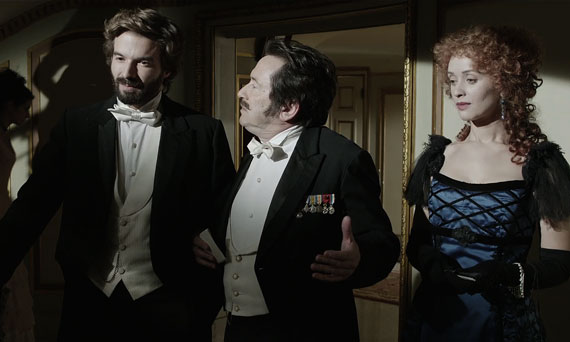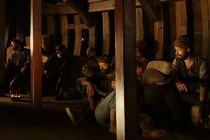Os Maias: João Botelho revisits Eça de Queiroz’s Portugal
by Vitor Pinto
- The adaption of the sarcastic novel published in 1888 is hitting 22 screens today

Great pieces of work are usually universal and timeless; they cross frontiers and challenge the flow of time thanks to their ability to carry on inspiring several generations after the moment of their creation. Os Maias [+see also:
trailer
film profile], published in 1888 by Portugal’s realistic writer Eça de Queiroz, is one of these works. Monumental, amoral and profoundly sarcastic, the novel has now been adapted for the big screen by director João Botelho, who seems to have seen in the book not the portrait of an incestuous love affair set in the 19th century, but rather a mirror reflecting 21st-century Portugal. Despite the ladies’ frou-frous and the gentlemen’s suits, Os Maias is not meant to be a period film, but a contemporary reflection on the sins and decadent splendour of a crisis-riddled society. Fortunately, we are still left with Eça’s visionary irony, of which Botelho seems to be a devoted follower.
Os Maias focuses on the story of three generations of men in the Maia family: grandfather Afonso (João Perry), son Pedro (Nuno Casanovas) and grandson Carlos (Graciano Dias). In the film, the adventures of the first two (described in detail in the novel) are the subject of a sort of prologue, shot in black and white, which introduces and contextualises Os Maias’ main plot. Said plot, shot in full colour, only begins when 27-year-old Carlos returns to Lisbon after a rite-of-passage journey across Europe. His intention is to establish himself as a doctor in the capital. But gaping between the plans he has for his new life and its final realisation, there lies a chasm of his own habits, in which he indulges in his public hobbies, his private vices flourish and paradoxes become intertwined.
It is on that same chasm – full of caricaturised potential – that Botelho centres his adaptation, trying to find his own cinematic viewpoint from which to examine the enormous gallery of archetypal characters that Eça portrayed. But it is hard to find and impose one’s personal style when the starting point for an adaptation is as forceful a material as Os Maias. The solution he has found – a radical one – swings between inevitable ellipses in the plot and the extreme opposite of this, ie, an almost unaltered transposition of the novel’s witty dialogues as well as the introduction of an off-screen narrator.
In this adaptation process, Os Maias asserts itself as an ensemble-cast piece with strong theatrical and operatic tones. This effect is certainly enhanced by Botelho’s numerous static shots, the tragicomic tone of the actors, as well as the film’s constructed sets, which include grand old houses and fake outdoor landscapes painted by plastic artist João Queiroz. In fact, not a single sequence in the film was shot outdoors, both an aesthetic and a financial choice to which Eça himself would not have been indifferent.
In a mostly male cast, newcomer Pedro Inês stands out as João da Ega, the lead’s scathing best friend, and actress Maria João Pinho (soon to appear in João Salaviza’s much-anticipated feature debut, Montanha [+see also:
film review
trailer
interview: João Salaviza
film profile]) camps it up as a delightfully moving and over-the-top adulterous countess. Graciano Dias gives a credible performance, drowning his Carlos da Maia in a mixture of desire and bourgeois ennui, while Brazilian actress Maria Flor worked hard to create a peculiar pronunciation (mixing French and both European and Brazilian Portuguese accents) for her cosmopolitan character (Carlos’ unknown sister).
Os Maias is a €1.5 million project produced by Alexandre Oliveira for Ar de Filmes. NOS Lusomundo Audiovisuais handles its theatrical distribution as of today across 22 local screens, hoping to turn the film into one of the most-seen local titles of the year.
Did you enjoy reading this article? Please subscribe to our newsletter to receive more stories like this directly in your inbox.


























